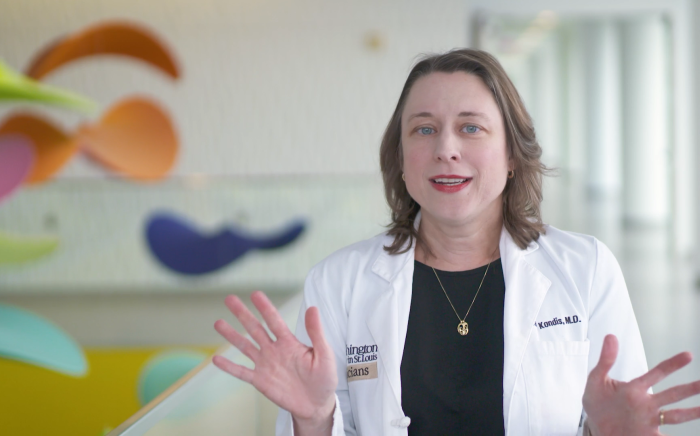About 1 in 2,000 babies is affected by craniosynostosis, in which the sutures of the skull bones close too early. This leads to an abnormally shaped head not related to external factors.
“Usually abnormal head shape due to craniosynostosis can be differentiated from deformational plagiocephaly by physical exam,” explains Kamlesh Patel, MD, a Washington University pediatric plastic and reconstructive surgeon at St. Louis Children’s Hospital who specializes in craniofacial and pediatric plastic surgery.
A CT scan can confirm craniosynostosis, Dr. Patel says. “Some babies go undiagnosed and grow up with a misshapen head but no other symptoms. However, about 5 to 40 percent of babies with craniosynostosis develop intracranial hypertension, as the brain does not have enough room to grow.”
The chance of developing intracranial hypertension, which is increased pressure inside the skull, rises with the number of sutures that have closed.
Craniosynostosis can be hereditary and accompany other congenital defects or occur randomly in otherwise healthy children with normal intelligence.
For babies diagnosed between 2 and 4 months, St. Louis Children's Hospital offers an endoscopic technique using small incisions to open the closed sutures of the skull. After the procedure, the baby wears a custom helmet for a few months to guide head growth and normalize head shape. This innovative endoscopic treatment offers many advantages to the patient over open craniosynostosis, including significantly shorter recovery time, smaller scars, less discomfort and swelling, and shorter hospitalizations.
Babies older than 6 months may need an open surgery that requires a larger incision.
“Through this procedure, we expand the skull to give the brain more room to grow and normalize head shape,” Dr. Patel says. “The incision is well hidden.”
To make an appointment with the endoscopic craniosynostosis repair team, call 314.454.KIDS (5437) or 800.678.KIDS.












